24 Different Types of Goat Cheese
When you buy through our links, The Breslin may earn an affiliate commission. Learn more
Goat cheese can be a hit or miss, but luckily, there are different types of goat cheese for you and your palate to experiment with. The earthy and tangy nuances can easily sweep many people’s palates, while others frown on the “goatiness” that comes with the cheese.
I used to be a goat cheese hater, but I have grown to love the ethereal bite of true goat cheese and the notes of tanginess associated with it.
So, what is your stance? A goat cheese enthusiast or hater? If you’re thinking about giving this type of cheese another try, I’m sure you’re only welcomed by its amazing goodness.
Check out this compilation of different types of goat cheese, and you will change your mind instantly!
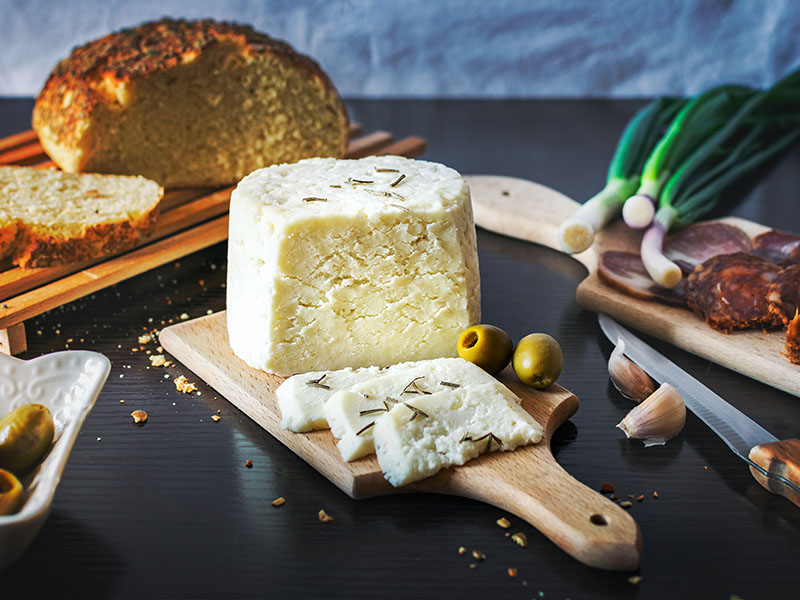
Try These Delicious Soft And Soft-Ripened Goat Cheeses
Soft goat cheese is also known as chevre; this type can spruce up any dish and can be awesome when eaten as a snack. This category of cheese is unripened and takes no more than a few days to age.
Short maturing period results in a milder, less tangy flavor of this cheese, whereas the texture is usually soft and spreadable. Unripened soft goat cheese can be plain or complemented with some herbs to enhance the flavor and aroma.
1. Buche De Chevre
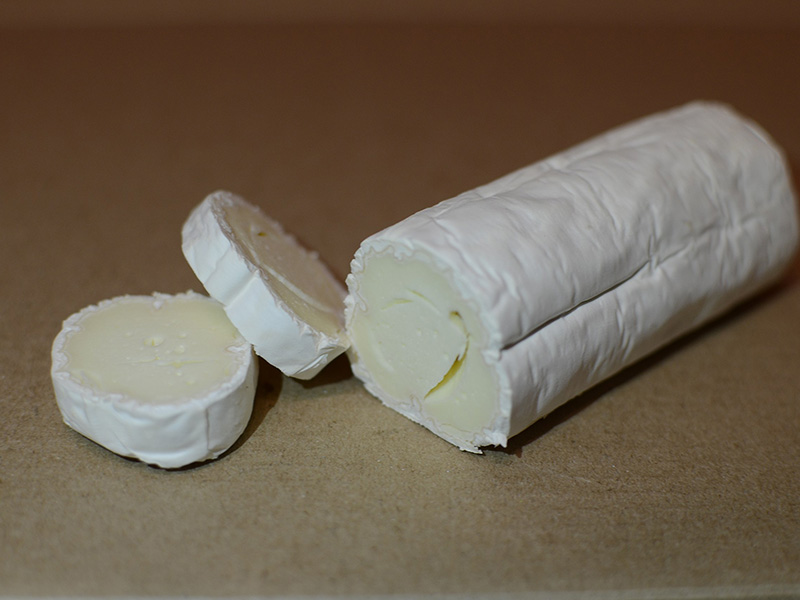
Buche De Chevre has a distinctive log shape and bloomy rind.
Recognized by the log shape and a bloomy rind, this delightful cheese is widely made in France, yet Poitou-Charentes is where most of its production takes place. The cheesemakers typically use pasteurized milk and allow the curd to be ripened for 1-2 weeks.
Buche De Chevre has a mildly tangy and earthy flavor with a touch of sweet notes of caramel. The ripening period leaves it with a crusty, hard yet edible bloomy rind, whereas the center is soft, creamy, and flaky.
This French cheese is an awesome pairing with Cabernet Franc red wine or Sauvignon Blanc. The soft, tangy paste also goes well with quinces or canapés. You can combine warmed Buche De Chevre with salads or top it with fruits for dessert or a classic starter.
2. Crottin de Chavignol
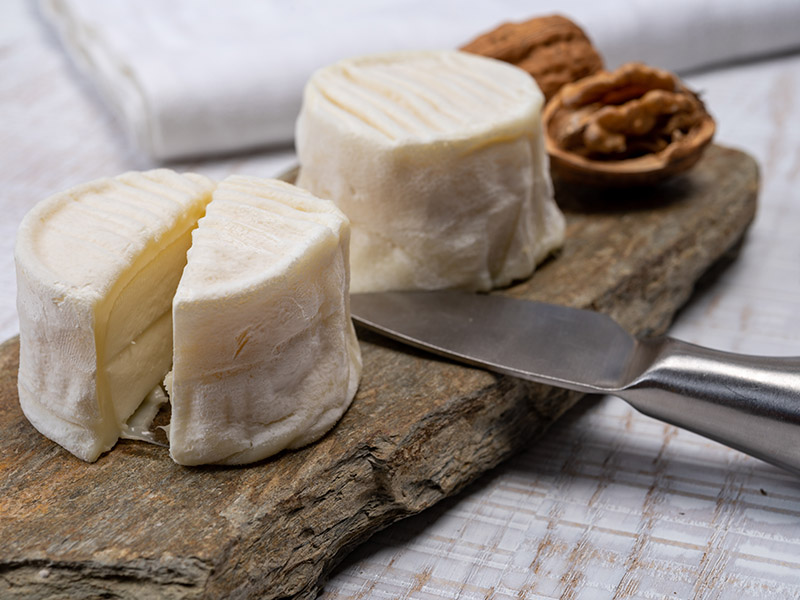
This rustic cheese originates from Chavignol – a small hamlet nestled in the Loire valley, France.
Crottin de Chavignol is easily recognizable for its thick brown coats and is among a few goat cheese varieties that are edible at many stages of its maturity. The thin, moldy rind conceals dense, moist paste right underneath with a nutty, goaty flavor.
Chavignol can mature for up to three months. The taste develops from creamy and nutty in its young state to dry and brittle in the first six weeks. It takes on a more pronounced flavor and pungent smell as it continues to age with a rough rind over time.
Crottin de Chavignol is best served with the well-known local wine Sancerre for an unmatched culinary experience. It can also spruce up your dessert with fruit and chocolate.
If you’re after something fresh and enticing, cut Crottin de Chavignol in half for a perfect topping on salad or arugula. Alternatively, pair it with pistachios and beetroots to appreciate the delicate touch of the nuttiness of the cheese.
Here’s the demonstration on how to make warm goat cheese salad with Crottin de Chavignol!
3. Valençay
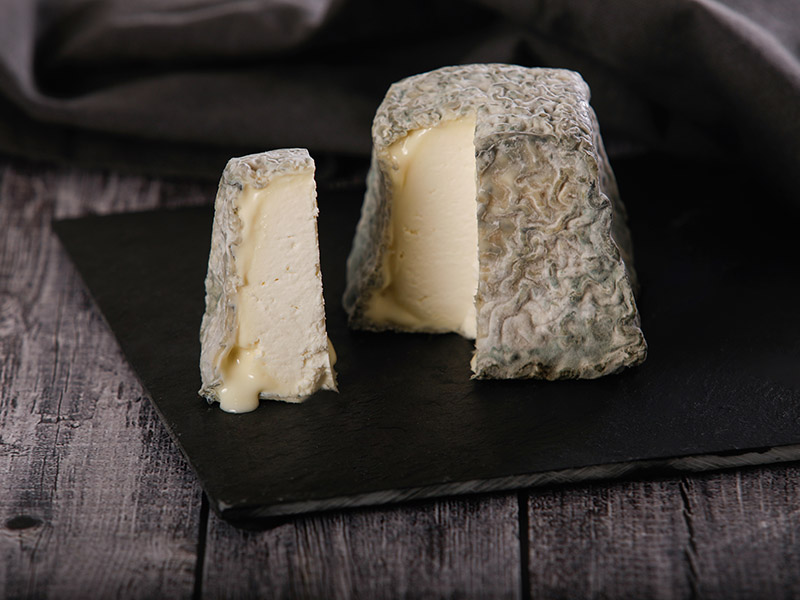
Valençay is one of the classic French cheeses hand-molded in the town in central French – Berry. Legend has it that this goat cheese was originally shaped like a pyramid until being lopped off the top by Napoleon because it reminded him of his military failure in Egypt.
This unpasteurized goat-milk cheese is known for its white, silk-smooth, and dense paste. Young Valençay features a fresh citrusy taste, but it gradually grows into a more nutty and goaty flavor with age.
The rind is normally gray, with a touch of white, blue, or green from the natural molds. The production of Valençay is generally from March to December, but the best season for indulging this type of cheese falls between April and August.
Like Buche De Chevre, Valençay is a perfect match with crisp, flowery white wine like Sauvignon Blanc. The acidity in this wine will accentuate the citric tang of the cheese. It can also be served with slices of crusty bread and chestnuts to delight your taste buds.
4. Pélardon
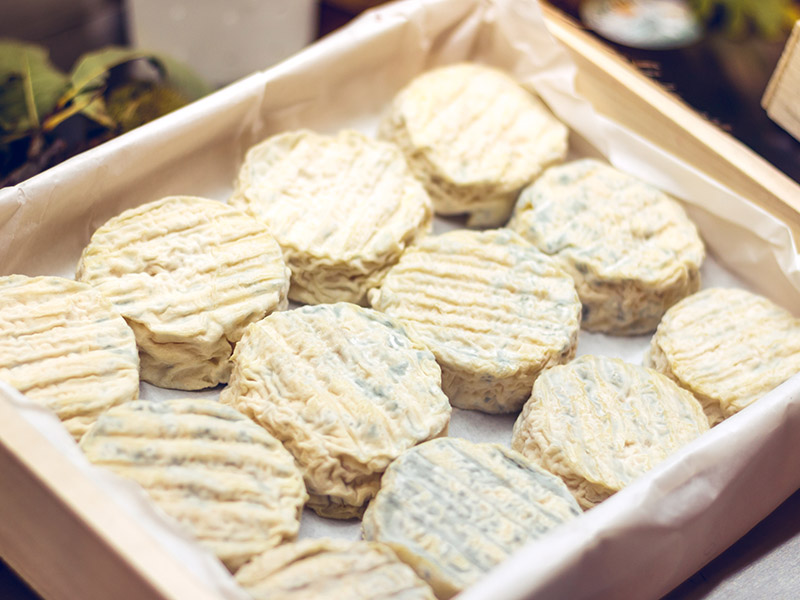
Pelardon des Cevennes, or Pélardon for short, is a fresh table cheese from the departments of Aude, Gard, Lozére, and Hérault in France. This medallion-shaped goat cheese has a fruity flavor with the saltiness and acidity striking the right balance.
The ripening usually takes around 2-3 weeks in a well-aerated cellar. The thin, wrinkled rind develops a drier and harder texture with age, and the goaty aroma becomes stronger.
Yet, the white-to-ivory interior is still capable of giving you a creamy and smooth mouthfeel with a hazelnut flavor. March to October is the ideal time to pamper yourself with this delightful farmhouse cheese!
Pop open a bottle of bold red wine to elevate your culinary experience with this goat cheese. Besides smoky bacon and nuts, Pan-fried Pélardon crowning on salads is also an awesome way to enjoy.
5. Feta
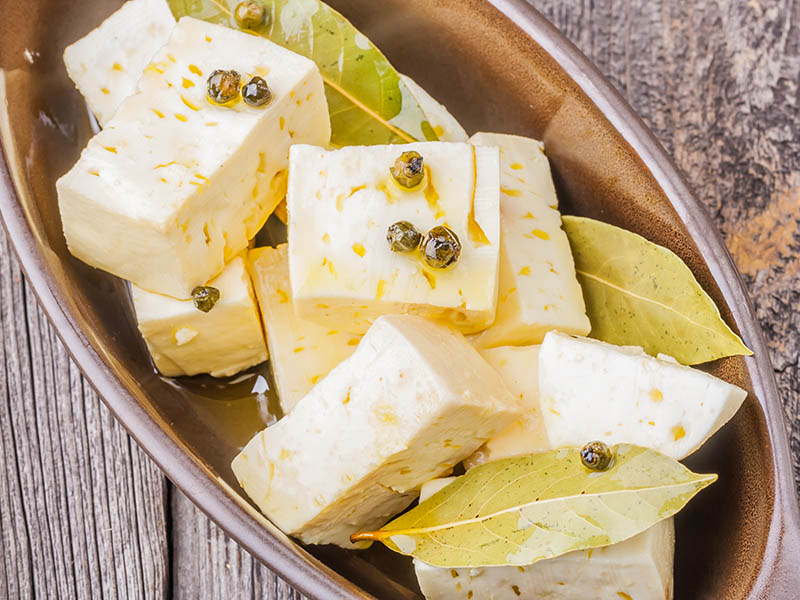
Feta is the national cheese of Greece. The cherve is documented to appear during Byzantine times, but the name “Feta” only gained currency by the 19th. Feta itself is a Greek word that means “slice”, since the cheese was cut and packed into barrels in the early times.
Feta cheese is produced from goat milk, or a combination of goat and sheep milk to enhance the tanginess. It is molded into big blocks and put through a brine curing process for the flavorsome tangy, and salty taste. The longer the brine takes place, the sharper the taste.
Crumbly and creamy with a slightly grainy texture, feta goes exceedingly well as a sprinkler to salads. It can add an awesome flavor to lasagna and fresh vegetables and pesto when baked. Feta-wrapped grapes also make for an exciting appetizer that you don’t want to miss!
Let’s take a tour of this cheese-making factory in Greece to see the detailed process of making authentic feta cheese.
6. Caprino
Caprino is traditionally made from coagulated whole or skimmed goat’s milk. The production of this type of cheese is widespread in Italy, and the name “Caprino” actually derives from the Italian word Capra, which means cheese.
It takes a minimum of 30 days or more for Caprino to age. The cheese is salted along the way but can also be seasoned with herbs like garlic, parsley, chives, or pepper to enhance the flavor.
There are two varieties of Caprino based on the aging period. Fresh Caprino (Caprino Fresco) is often 3-4 days old with a soft, smooth, and creamy texture that instantly melts in your mouth.
Aged Caprino (Caprino Stagionato) is usually allowed to age 20-40 days or beyond. For this reason, the saltiness and tang are also more pronounced. It also develops a thin rind with a reddish and yellowish hue.
This Italian cheese is perfect when going with fruits or as a topping for salads. The mild taste of the fresh Caprino goes harmoniously with light white wines, while the salty and tangy flavor of the aged version makes it a perfect pairing for more structured white wines.
7. Brunet
Brunet is an original Italian type of cheese whose name is taken from an ancient breed of goat that is native to the hilly region of Piedmont in northwest Italy. It is a lightly aged goat cheese, which only takes around ten days to age.
This parcel of goodness nestles inside a thin, wrinkled edible rind. The taste can be described as tangy with a touch of earthy mushroom. Soft, creamy, and gooey, this ivory paste gives a silky mouthfeel on the tongue.
Brunet is one of the best table goat cheeses to indulge in. Thanks to its soft and spreadable texture, you can smear a generous amount on your favorite cracker or baguette. You can also pair the cherve with cured meats like prosciutto or salami for a protein boost.
Brunet goat cheese is quite easy-going in terms of wine pairing, as it can easily find a great company in both white and red wine.
8. Selles-sur-Cher
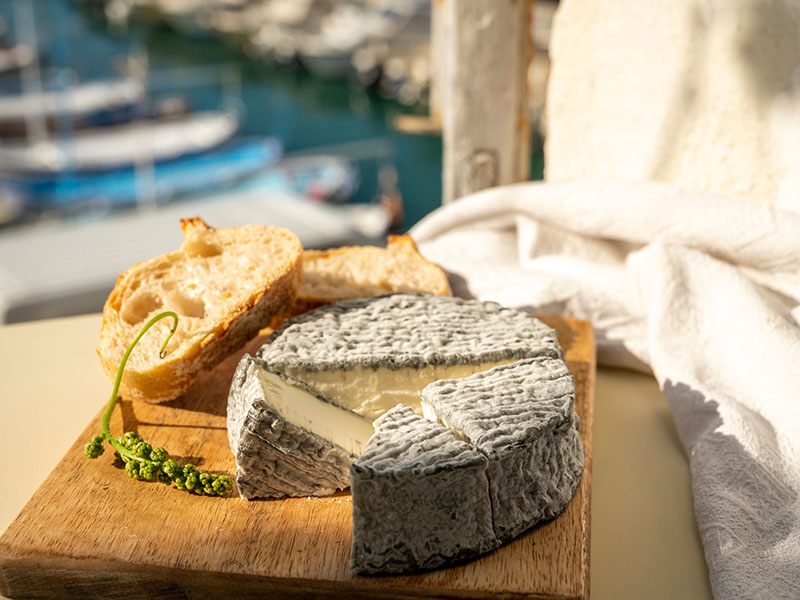
Selles-sur-Cher is among the classic goat cheeses from France. The production of this cheese dates back to as long as the 19th century, and the name is derived from the place where it first appeared – Selles-sur-Cher in the Loir-et-Cher.
Selles-sur-Cher often comes in the small cylindrical or flat-disk form and is dusted in edible ash, explaining why it has a blue-to-gray molded rind. The cheese takes around three weeks to mature and develop a mild caprine flavor and a nutty taste.
Selles-sur-Cher is highly versatile and can be used as an ingredient in your pasta, salad, or desserts.
The sharp taste can accentuate the flavor of white wines such as Chenin Blanc and Merlot. The classic pairing of goat cheese and Sauvignon Blanc makes a wonderful choice here!
9. Fromage Frais
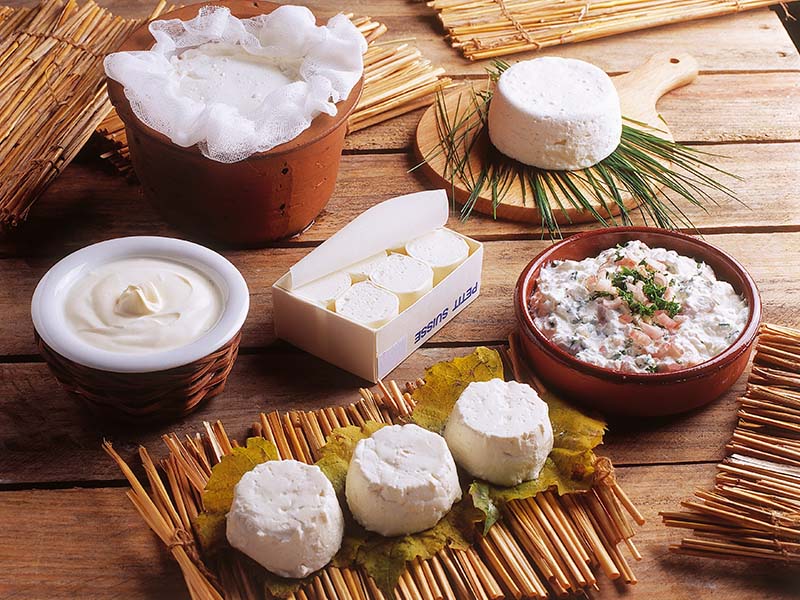
Fromage Frais is another French staple goat cheese. It is typically produced from whole or skimmed goat’s, sheep’s, or cow’s milk. But cream can be a great addition for more creaminess and richness.
Flavor-wise, Fromage Fraise might remind you of cream cheese due to its milky, tangy, and slightly acidic taste. The key difference is that this goat cheese has a significantly lower fat content.
Fromage Fraise can be enjoyed on its own and go well with honey or fresh fruit puree. It is also awesome with caviar to refresh your palate! Either sparkling white wines or fortified wines can make a great accompaniment with this creamy cheese.
10. Banon
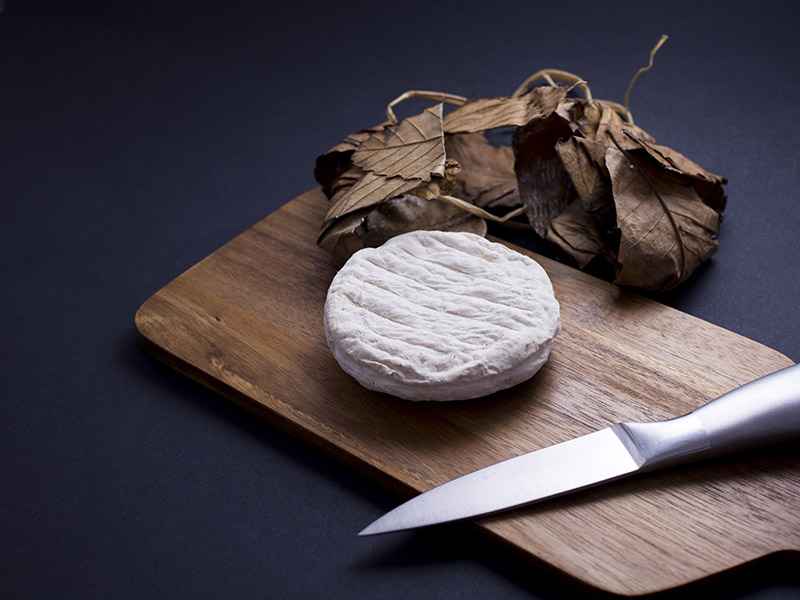
This soft, unpasteurized cheese was originally made in Banon, a town in southern France. It boasts a long history dating back to the Gallo-Roman era. Banon has a distinctive appearance with chestnut leaves and raffia wrapping around the curd of cheese.
The 2-week-long maturing period leaves this cheese with patches of blue and gray on the molds and an intense flavor. The paste underneath is soft and sticky and has a veggie and wine flavor.
The best way to enjoy Banon is to pair them with a glass of dry wine. You can also spread it on a hunk of crusty baguette for amazing taste or enjoy the cheese alongside fresh fruits.
11. Pouligny-Saint-Pierre
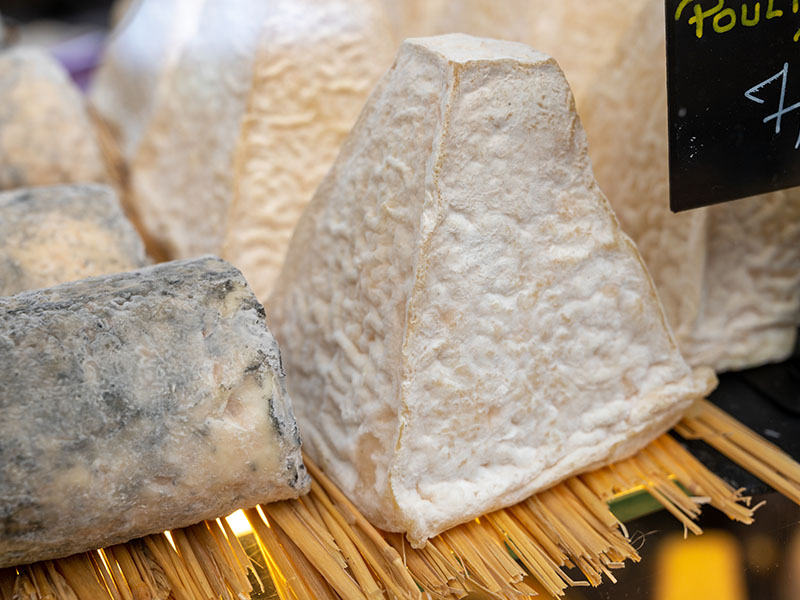
Pouligny-Saint-Pierre goat cheese takes its name from its hometown, where the first batch of cheese was made in the 18th century. Despite not sharing the same legend with Valençay, Pouligny-Saint-Pierre has a distinctive pyramidal shape with the top sliced off.
The rind is ivory or golden brown in color, and just like many other varieties, it takes on patches of gray-to-blue hues when aged. Underneath this wrinkled rind is a bright, white, dense, and homogenous paste, which feels silky soft on the tongue.
Pouligny-Saint-Pierre is known for its fresh and tangy flavor. With a short maturing time, you can feel the quite subtle and delicate taste revealing hints of goatiness and hazelnuts.
The dryness and crisp acidity of Pouilly Fume make a nice match with this goat cheese. Other white wines with concentration and depth can also be great.
Semi-Soft Goat Cheese Varieties To Dream About
Next up, you have semi-soft goat cheeses! This group still has a higher content but has an elastic and pliable texture. The taste of semi-soft cheese is still mild compared to more aged goat cheeses.
12. Humboldt Fog
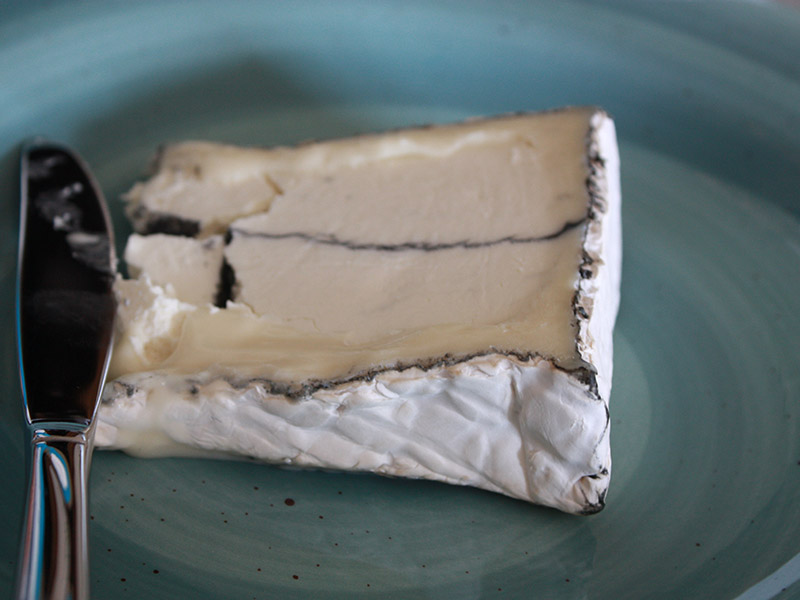
Humboldt Fog is a reputed American original.
Humboldt Fog is one of the most recognizable American-made goat cheeses. Hand-molded by the cheese manufacturer Cypress Grove Chevre of Arcata, California, this goat cheese stands out with a distinctive horizontal line of edible ash running through the center.
The white paste boasts a tangy flavor and a smooth, slightly crumbly texture. The taste is also complemented by notes of floral and herbaceous.
After maturing, it breaks down under the rind, developing into a smoother, translucent, and eventually runny. The longer the cheese is left to age, the more this runny paste expands. Many people consider this stunningly luscious paste the most scrumptious part of the cherve.
Crumbled Humboldt Fog is a great addition to salads. This American original can also taste amazingly over tart apple, Marcona almonds, or prosciutto with a drizzle of honey.
Inside this factory in Cypress Grove is where the delicious Humboldt Fog is brought to life.
13. Bucheron
This wrinkly semi-aged little log is another native to the Loire Valley of France. Also known as Boucheron, Boucherond or Bucherondin, the cheese is proud to be the first French-made goat cheese exported to the US.
Each log is normally made to weigh around 3-4 pounds and left to ripen for 5-10 weeks. Chalky and dense at the center, the white-ivory paste becomes more translucent near the rind with age.
The texture develops from clay-like and semi-firm texture when the cheese is young to soft and somewhat gooey towards the end of the ripening stage. In the same vein, the taste also becomes more assertive and tangy with age.
The crisp wine from the same place, such as Pouilly Fume and Sancerre, will perfectly complement Bucheron’s bold taste. This goat cheese can easily steal the spotlight on a cheeseboard or melt perfectly over a steak, crostini, and quiche.
14. Bleu de Chèvre
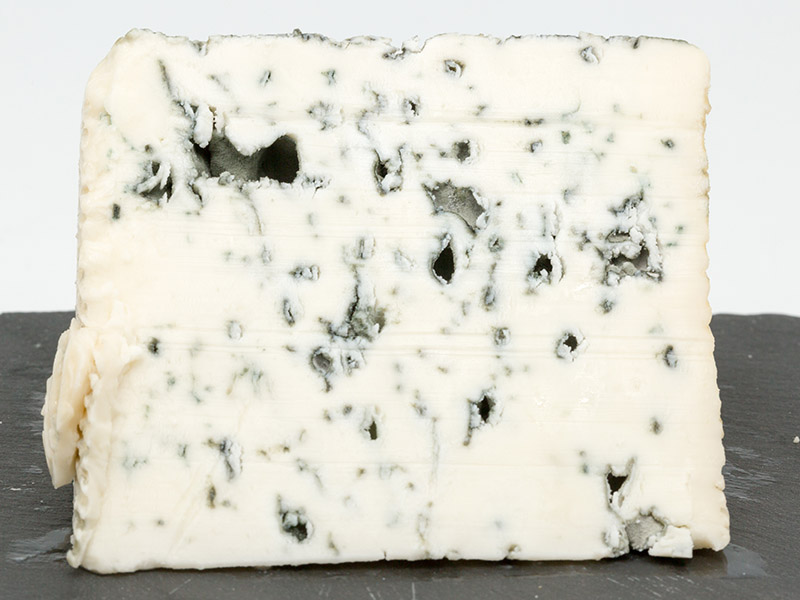
Bleu de Chèvre is a blue cheese with a milder taste than varieties made from cow’s and sheep’s milk.
Hailing from Auvergne, Bleu de Chèvre is among the few blue cheeses made out of goat’s milk. The taste is milder than blue cheese versions made from sheep’s or cow’s milk, making it an excellent choice for those who want to give blue cheese a go without feeling too overwhelming.
The paste underneath the rind is soft and supple, and the flavor is creamy and salty with a slightly herbaceous finish on the tongue.
Stuffed figs with Bleu de Chèvre can make for a simple yet delectable appetizer. It can also go exceedingly well with honey or crackers. Pour a glass of Sauvignon Blanc or Muscat de Beaume de Venise for a more fulfilling experience.
15. Murcia Al Vino
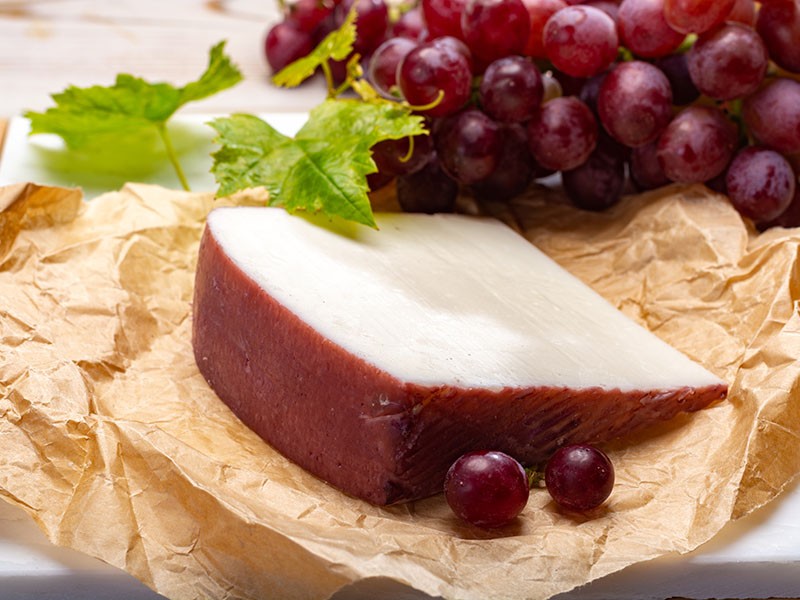
Murcia Al Vino, also known as “queso de Cabra al vino” or “the drunken goat”, is a goat cheese from the town of Jumilla in Murcia, Spain. The cheese makers only use unpasteurized milk taken from the Murcia’s best milk-producing goat breeds to produce the cheese.
The name “drunken goat” is derived from the fact that the manufacturers wash and soak the rind in double-fermented red wine (often the wine produced by the region – Monastrell).
This goat cheese has a purplish-red hue after going through multiple baths of red wine. The flavor is bold and creamy, complemented with a bit of saltiness and a sophisticated aroma of the wine.
Murcia Al Vino is the best companion with full-bodied wines like Tempranillo. You may want to serve it with fruits, nuts, crackers, or grilled baguettes.
16. Saint-Maure de Touraine
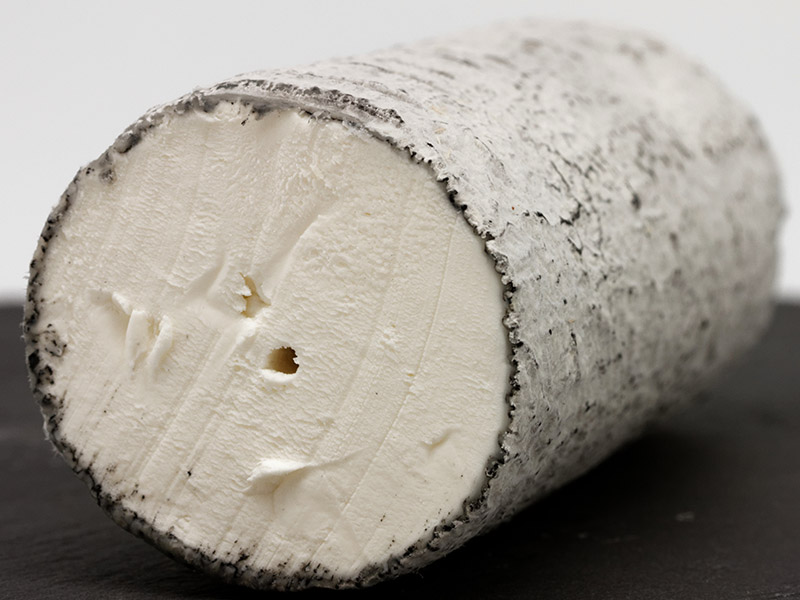
Saint-Maure de Touraine can take on various shapes with buttery and smooth paste.
Saint-Maure de Touraine is a familiar French cheese that shares the same root with many goat kinds of cheese here. It comes from the valley of wine and cheese – Loire – in the center of France.
This classic cheese comes in various shapes: truncated pyramids, cylinders, discs, or a log with a stick in the middle running end to end. The smooth and buttery interior delivers an acidic, buttery, and nutty taste.
Best with a glass of fine wine from the same place, such as Sauvignon Blanc, Sancerre, or Fumé Blanc. The balanced taste of this French cheese makes it perfect for serving straight up on the table, over a salad, and a hunk of baguette (with some pieces of fig jam).
17. Chabichou
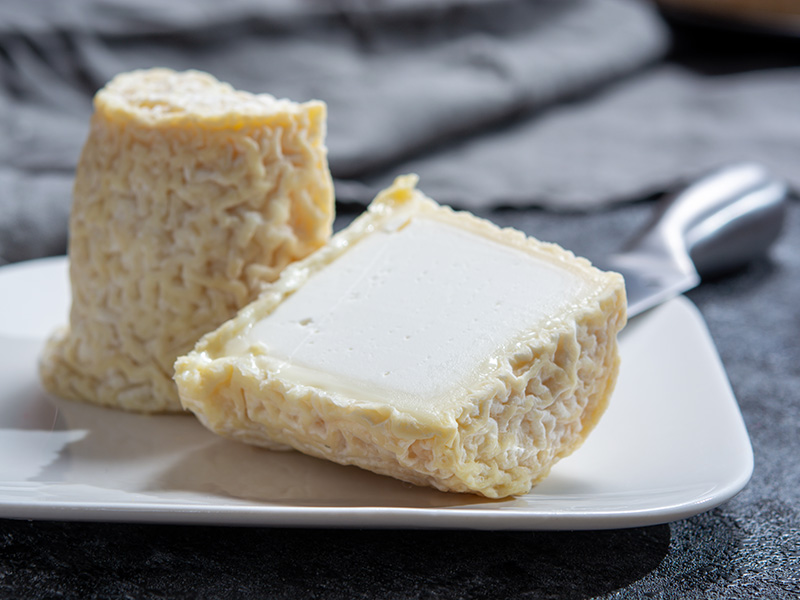
The production of artisanal cheeses is often limited to select regions to guarantee their quality and authenticity. Chabichou du Poitou, or Chabichou for short, is a case in point here!
Legend has it that the creation of Chabichou dates back to the 8th century, when the defeat of the Arabs in the northern Nouvelle-Aquitaine happened.
While many Arabs chose to return home, some settled there and made a living off their goat herds (and thereafter, their hand-made cheese). The cheese is initially named cheblis (translating to “goat” in Arabic) before taking on its current name.
Chabichou comes with a distinctive, wrinkled edible rind that wraps around a firm, creamy interior paste. The cheese does taste goaty (like any other goat cheeses do) but still offers a sweet flavor and subtly salty and tangy aftertastes.
The strong taste of Chabichou can be well balanced by either champagne, light white wine, or beer.
18. Tomme d’Aydius
Tomme d’Aydius is an example of fine artisanal cheese-making of Savoie and Haute-Savoie, in France. The wheels of raw goat’s milk are washed for around six months and end up with a delicate yet complex, nutty, and herbaceous flavor.
It also exudes a slight hint of fruit and lemon. Don’t forget to slice open the yellowish rind to reveal a smooth and buttery paste. While the production of this cheese occurs all year round, the peak season to enjoy its prime quality is between March and November.
Tomme d’Aydius will taste amazing with a glass of white wines Savoie, Abymes, Apremont, or Roussettes. It is also awesome when served with fresh bread or potatoes. Simple paring, such as fresh or dried fruits, makes for an awesome experience.
Don’t Ignore These Semi-Hard And Hard Goat Cheeses
This category offers a perfect balance between aridity and moisture, which gives a firm and slightly springy texture. They are typically packed into molds with greater pressure and left to ripen for a longer period than the previous types of cheese.
19. Halloumi
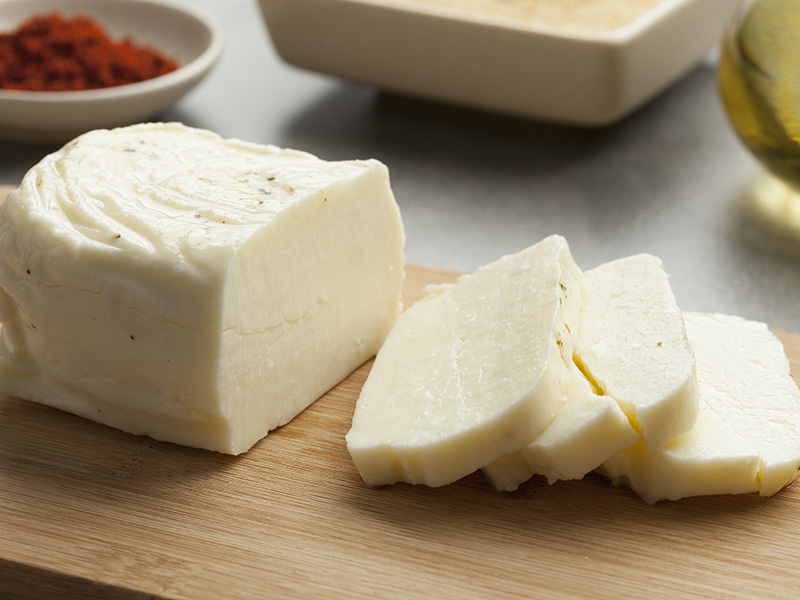
Made from a combination of goat’s and sheep’s milk, Halloumi is a delicacy associated with Cysrup island. This Mediterranean style of cheese has a higher melting point than others (135°F) thanks to its special ripening process, which allows it to be grilled or fried without melting.
Halloumi comes with a firm and relatively springy texture, resembling thick feta or mozzarella. Yet, the cheese stands apart with its saltiness imparted from the brine in the aging process.
This goat cheese is quite refreshing, and that’s why it can be a perfect pairing with watermelon to savor on a scorching hot summer day. It is highly resistant to heat, so you can also grill, pan-fry the cheese, and top it over salads.
Back to its root, Halloumi is a staple of Cyprus Meze. This grilling cheese is highly versatile, and you can pair it with dry rose, wheat beer, or any other wine variety.
Let’s discover the making of Halloumi in Cyprus and awesome recipes that you can try!
20. Garrotxa
Garrotxa is another goat cheese produced from Murcia breeds in the Garrotxa region (and thus, the name) of Cataluna in Northern Spain.
This semi-hard goat cheese takes up to 75 days to mature, which results in a compact, semi-hard parcel that delivers bold and rich flavor.
This semi-firm cheese was almost on the verge of extinction until it was revived by young Catalan cheesemakers in the 1980s. Since then, it has gained substantial popularity among cheesemakers.
Garrotxa is amazing on its own alongside fine white wines such as Pinot Gris, Verdejo, Priorat, Catalonia, etc. It is a goat cheese that can go with almost everything, from nuts, crusty baguettes, Marcona almonds, and quince paste, to Cava.
21. Gouda
Gouda is an award-winning cheese that originates in the Central Coast Creamery, Paso Robles, California. This type of cherve is normally produced from cow’s milk, but sometimes, goat’s cheese can be the main ingredient.
Its maturation takes about five months, by which time its hard rind and semi-firm-textured interior have developed. The little package packs a wallop of ivory-colored paste with a slightly grainy texture and a silky smooth mouthfeel. The cheese releases a characteristic caramel aroma.
People who often pass on goat cheese will find Gouda is an exception! The taste is mild and refreshingly sweet. It feels like caramel and butterscotch and does not have the intense tanginess that many people despise.
Try this marinated Gouda recipe for a simple yet stunning appetizer!
22. Monte Enebro
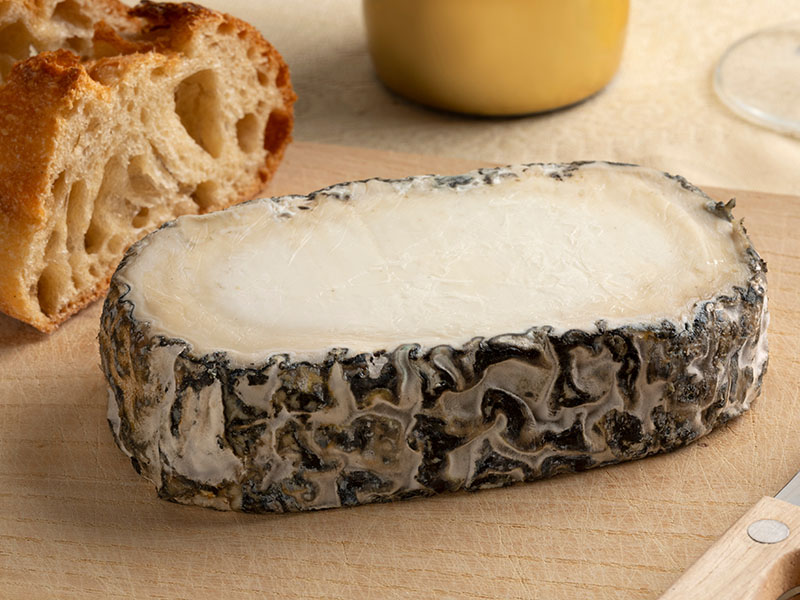
Monte Enebro is a log-shaped goat cheese originating from Spain by the reputed cheese producer Rafael Baez and his daughter. It is among the first lines of new cheeses on the scene in Spain but has quickly risen to its stardom.
The Bazes used a Roquefort-like mold for making this cheese. However, instead of piercing with needles to create air pockets like Roquefort, the cheesemakers let the blue mold grow on the rind, giving Monte Enebro the characteristic complex flavor and look.
The paste tastes more acidic towards the rind, accompanied by easily recognizable overtones of black walnut, whereas the interior has a salty, soothing, and lactic flavor.
The insistent flavor of Monte Enebro can be compensated by sweet wines like Sauternes Muscat grape wine or Spanish dessert wine.
23. Tulum Cheese
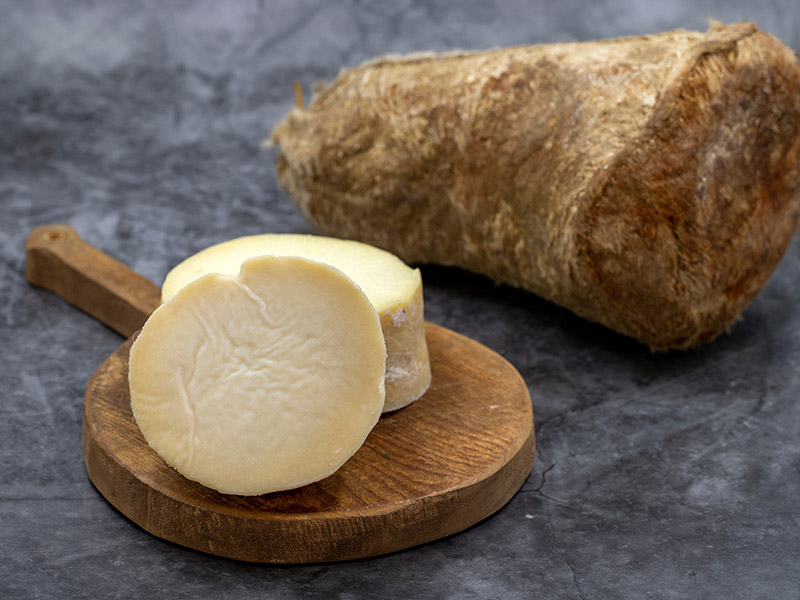
Tulum cheese is among the most popular and creamiest Turkish goat cheeses. The word “Tulum” simply translates to “skin” in Turkish. Traditionally, this cheese ripens in a goatskin casing.
Like most cheeses in Turkey, Tulum is mainly eaten straight on its own in breakfast or served as a meze in dinner. Fresh butter, freshly-baked Turkish bread, soft bread, Ramadan pide, or walnuts are the most common accompaniments with Tulum.
24. Majorero
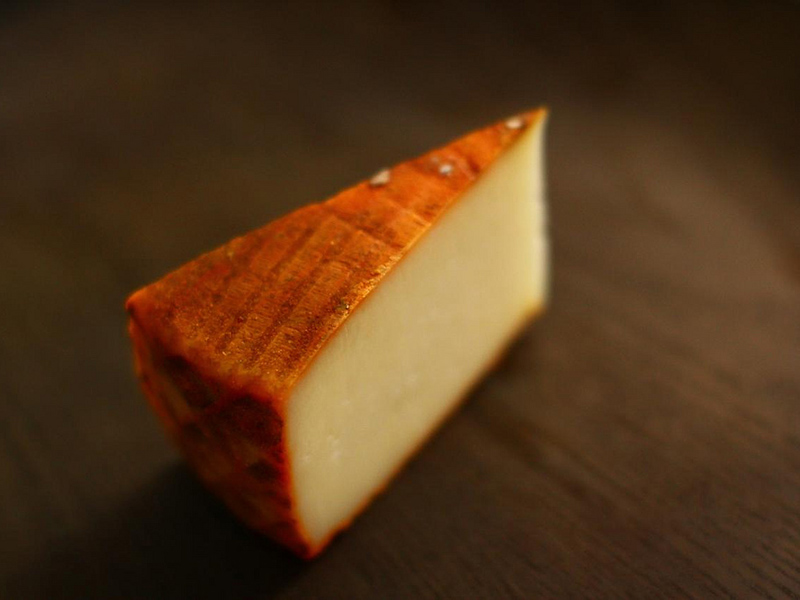
Majorero cheese is made from the milk of the local goat breed of the same name.
Majorero, also known as Queso Fuerteventura, originates from the island of Fuerteventura in the Canary Islands. Marrero literally translates to “the people of Fuerteventura”.
The cheese has a milky and nutty flavor, which is the characteristic of goat’s milk from the region – Majorero breeds. The pale-white paste inside is buttery and creamy, accompanied by a slightly gummy texture and an acidic finish.
This semi-hard has an amazing taste, and this is something even the world’s finest palates have to agree with. It won at the World Cheese Awards for the best-cured goat’s cheese with paprika.
Majorero can be served as a snacking cheese or a flavorsome dessert with some drizzles of aromatic honey on top or grilled cheese. You can also incorporate Majorero into your pasta, rice, potatoes, and many veggies.
Give Goat Cheese A Try, And You Won’t Regret
Different types of goat cheese are made in different parts of the world, contributing to various flavors and textures. No matter where the cheese is from, the long tradition of cheese-making guarantees quality and standardization with refined techniques and skills.
I hope you can pick your favorite goat cheese here and try it for yourself. You’ll soon find how common expectations about goat cheese are shattered with the first bite of melting luscious paste.
If you have any questions regarding this topic, feel free to leave a comment in the section below! And don’t forget to share this article with your friends!

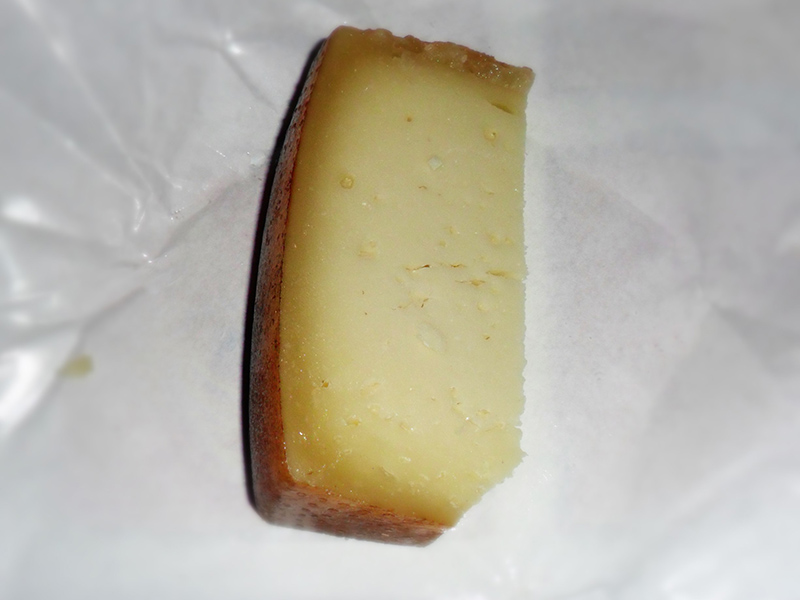
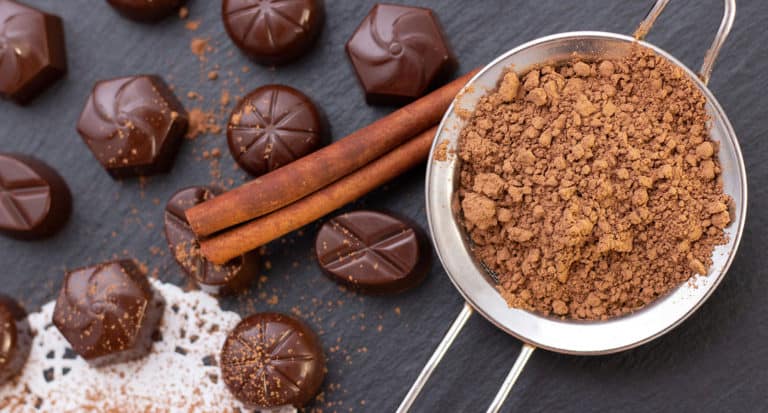
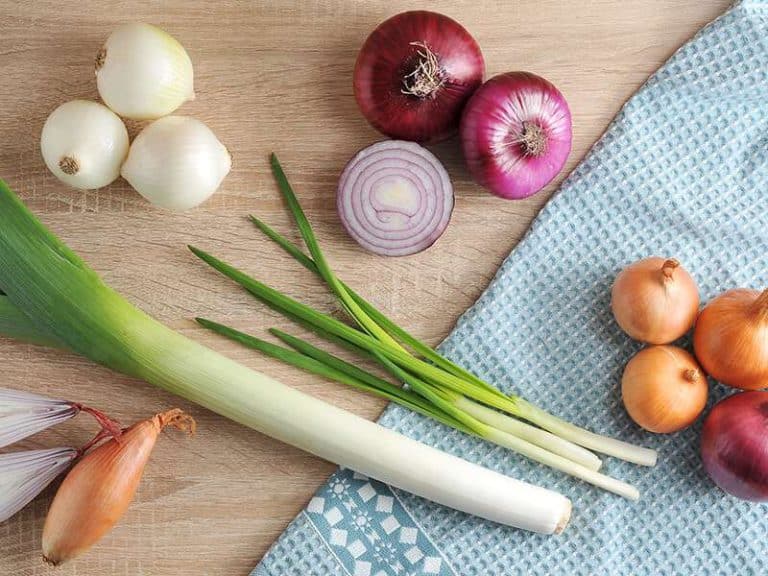
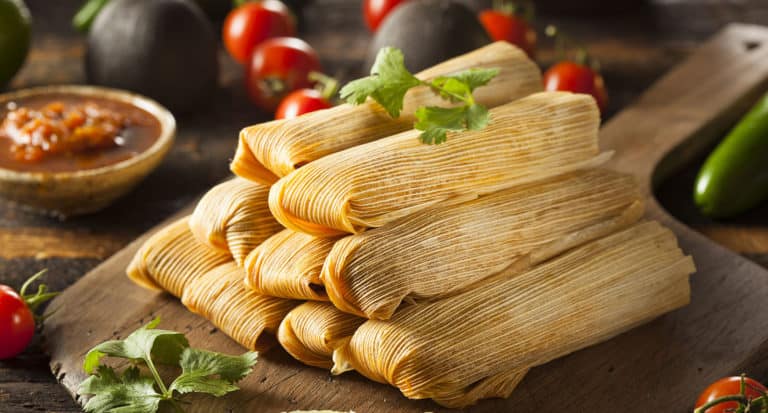


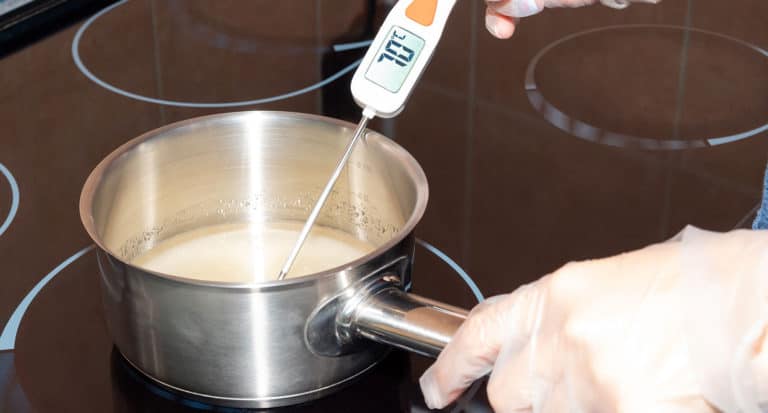
Amanda Collins
Founder and Senior Culinary Editor
Expertise
Culinary Arts and Management, Food Journalism and Critique, Recipe Development and Testing, Global Culinary Traditions, Sustainable Food Practices
Education
Institute of Culinary Education (ICE), New York, NY
Program: Diploma in Culinary Arts
Focus: Intensive hands-on training in culinary techniques, recipe development, and kitchen management, preparing students for professional roles in the culinary industry.
Monroe College, New Rochelle, NY
Program: Associate in Applied Science in Culinary Arts
Focus: Practical culinary skills, including cooking techniques, menu planning, and kitchen operations, with an emphasis on hands-on experience and industry standards.
Amanda Collins is a seasoned chef and food editor with a deep love for global flavors. Trained at the Institute of Culinary Education and Monroe College, and with over 15 years in the culinary field, Amanda has refined her skills in kitchens worldwide. Her background in food studies gives her a unique ability to share both recipes and the cultural stories that shape them.
As senior culinary editor at thebreslin.com, Amanda’s work brings authentic dishes to life, inviting readers to explore new flavors and techniques from around the globe. Her approachable style makes it easy for anyone to bring a bit of the world’s cuisine into their kitchen.